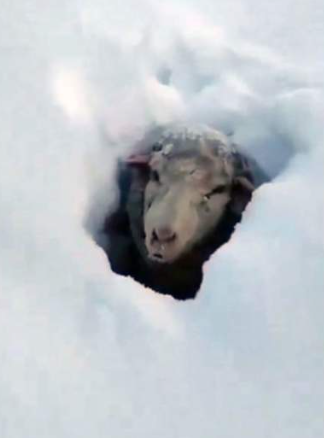
South America is currently experiencing an unusual early cold spell that is sweeping across the continent /https://mkweather.com/south-american-polar-bomb-snow-in-brazil-frosts-in-argenitna-chile-and-signigicant-cooldown-in-peru-ecuador//, bringing frigid temperatures well beyond typical winter zones and even reaching into tropical regions. This rare meteorological event has captured the attention of weather experts and local populations alike, as temperatures plunge to record lows during the month of May — a period typically transitioning toward warmer seasonal weather.
One of the most notable impacts of this cold wave has been recorded in northeastern Argentina, where the town of Bernardo de Irigoyen in the province of Misiones experienced an unprecedentedly low maximum temperature for May. On May 29, 2025, Bernardo de Irigoyen’s daytime high reached only 7.3°C, setting a new monthly record for the lowest maximum temperature ever documented in the area. This broke the previous record of 7.7°C, which had stood since May 29, 2007.
The town’s new record highlights the intensity and extent of the cold air mass penetrating the continent. Bernardo de Irigoyen, located near the subtropical border, usually enjoys relatively mild temperatures during May. However, the current cold spell has brought a stark chill to the region, dramatically altering local weather conditions and affecting daily life.
The effects of this cold wave are being felt across several countries. In addition to Argentina, parts of southern Brazil, Uruguay, Paraguay, and Bolivia, such as Peru and Ecuador have reported below-average temperatures, frost warnings, and unusual weather phenomena for this time of year. Farmers in these areas are particularly concerned, as the sudden temperature drop threatens crops and livestock that are not yet acclimated to cold conditions.
Meteorologists warn that this early cold spell may disrupt seasonal agricultural cycles and could lead to increased energy demands as households and businesses turn to heating earlier than usual. There are also health concerns, especially for vulnerable populations such as the elderly and those with respiratory conditions, as cold weather increases risks for illnesses like flu and pneumonia.
While such cold spells are not entirely unprecedented, the timing and intensity of this event are unusual. Typically, May marks a transitional period with gradually rising temperatures in much of South America.
| Country | Region/City | Reported Temperature / Event | Date | Notes |
|---|
| Argentina | Central & Northern Regions | As low as -4°C | May 26, 2025 | Polar air mass advancing over Argentina. |
| Argentina | Patagonia | Below -10°C | May 26, 2025 | Significant impact on agriculture and livestock. |
| Argentina | Nationwide | Below 4°C | May 29, 2025 | Persistent cold affecting daily life. |
| Chile | Andes & Metropolitan Region | Snowfall | May 29, 2025 | Snow reported due to polar air mass. |
| Brazil | São Joaquim, Urupema, Cambará do Sul | Snowfall | May 29, 2025 | Snow in parts of southern Brazil due to polar air mass. |
| Peru | Amazon & Andean Regions | Nighttime lows near freezing | May 28, 2025 | Red alert issued; heavy rainfall and strong winds up to 50 km/h. |
| Ecuador | Quito, Cuenca, Tulcán | Nighttime temperatures near freezing | May 28, 2025 | Significant drop in temperatures across the Andean region. |
Frozen Animals in Patagonia Amid Unprecedented Cold Wave
Patagonia, known for its rugged landscapes and variable climate, has recently been hit by an unusually severe cold wave that has brought freezing temperatures and early snowfall to the region. This rare meteorological event has had a significant impact on local wildlife, with reports emerging of animals suffering from exposure to the sudden cold and icy conditions.
The rapid temperature drop has caught many animals off guard, especially those not fully prepared for such intense cold this early in the season. Livestock, including sheep and cattle—key to the Patagonian economy—have been vulnerable to frostbite and hypothermia. Some animals were found frozen or weakened in pastures, prompting urgent intervention from farmers and veterinarians.
Wildlife has also felt the harsh effects. Native species such as guanacos, foxes, and various bird populations are facing increased challenges finding food and shelter as snow covers their usual habitats. The freezing temperatures can slow their metabolism and limit mobility, putting them at risk of starvation and increased predation.
Early-season freezing can disrupt breeding cycles and migration patterns, causing long-term ecological consequences. Additionally, young and juvenile animals are especially susceptible, with increased mortality rates during unexpected cold snaps.

An illustration photo: http://www.eluniversal.com


























